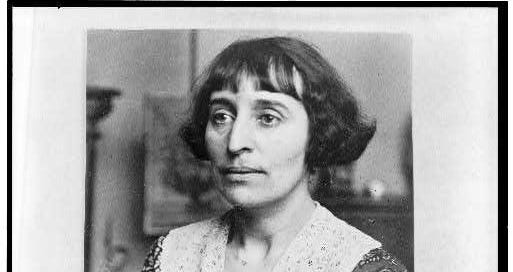My latest book, What is Queer Food? How We Served a Revolution, is available to order online, and will soon land in bookstores. And I’ll be on tour with it soon —please consider attending one of my events.
If you don’t follow me on Instagram, it may be news that I’ve written a book. What is Queer Food? How We Served a Revolution officially enters the world in a matter of days (the first Tuesday in June). It’s a collection of twentieth-century stories, laid out chronologically as braided narratives of famous figures and obscure ones: James Baldwin, Alice B. Toklas, Harry Baker, Craig Claiborne, Esther Eng, Herman Smith. Even quiche takes on a persona. I try to answer that question—what is queer food?—by thinking about food and the rituals of eating as practices that mark something like kinship across time; as expressive material for connected purpose, a struggle that feels collective. I try to think about food as balm for corrosive stigma.
To say that this book is one that’s been living within me for more than a decade is to acknowledge my body of work. That may sound grand—body of work—but it’s true that I’ve spent most of my career writing in mostly indie or obscure places; wrote for almost whatever opportunity presented itself, to get paid. If you keep writing, though, you may eventually find yourself attached to something like purpose. That began for me with pieces I wrote in 2009 as editor of SF Weekly’s restaurant blog, for a series I called Queer Food Capital, and continued with my first pieces for Lucky Peach in 2013: “That Day We Went Looking for Cochinita Pibil,” and of course, “America, Your Food is So Gay.”
Despite the traction “America” got, I have to tell you I was conflicted about writing more gay food stories, worried I was painting myself into a smaller and smaller angle inside the shrinking structure of magazine feature writing. When I was scratching together the proposal for my 2020 James Beard biography, The Man Who Ate Too Much, I remember saying to my agent that I worried it was sounding too gay—that I was framing Beard’s life too definitively with his sexuality, which it surely was. My agent answered with something like, “Why on Earth would you put in the times to build a career writing about gay food and now suddenly hold back?” A good question, maybe the only question for me. Still, I was uncomfortable. Would I be pegged merely as a gay food writer (until recently, pretty much the gay food writer)? Would I have gone so far that I would be ineligible to write other food stories?
Well, sometimes life—or the culture, if not the marketplace, or capitalism itself—pushes you out of your reluctance and into the arms of what you once feared. Feared because of the homophobia, the squirming discomfort toward stereotypical depictions of gays and lesbians that the culture at large regularly inoculated me with as a child, as if some diabolical schedule of vaccinations.
This book, this What is Queer Food?, is what it reads like when I don’t hold back. It’s the stories that have ripened within me, in some cases for decades; stories I never felt I had the voice to tell, until now. All of these voices that had to wait in silence with me; the voices of impatient actors, muted because they were never fully willing or able to tell their stories. Maybe waiting so long to flesh these stories out, to give them life and breath was partly an effort of rage on my part.
I used that word, rage, in the introduction to my Beard biography—meaning that what seemed a purposeful lack of understanding Beard’s gay experience had struck me as an injustice. It seemed to me that the only proper corrective for homophobic silencing involve wielding language hot with fury. What Is Queer Food? is an unleashing of so many things for me: the bottled-up stories, my love of textural examinations of cookbooks, a few reluctant glances in the mirror, and yeah: rage.
My mom recently finished my book. She asked if I was angry when I wrote it. I mean…yes.
It was the silencing of queer lives that steadily inflated my sense of of anger over the decades, silencing both of Beard and for the subjects of my new book. (The fact that many twentieth-century figures participated in their own silencing did not, for me, make them complicit, but rather added to the indictment of the whole rotten homophobic system—a system they did not choose.) Silence alone wasn’t the problem. That arose only after the official cultural record refused to include queerness, but silence was not a lack of sound. It was not a void of information.
Like noise-cancelling headphones emitting counter-waves to quiet information deemed troublesome, there was aural substance to the silence of earlier generations on whom we today project the rainbow of LGBTQ+ identity. Of course there was a project to cancel empathy by casting queers as deviants—that defined sexual or gender variance of any kind as pathology, and scared many into anxious or deeply conflicted conformity. Memories were scrupulously wiped of stories.
My book—I’ll be grand again and call it my body of work—is an attempt to scribe them back to life. I hope you read it. #





I am beyond thrilled for your book. It’s high about time. ❤️🌹
I'm so thankful this book is in the world, and I can't wait to chat about it on June 10th.